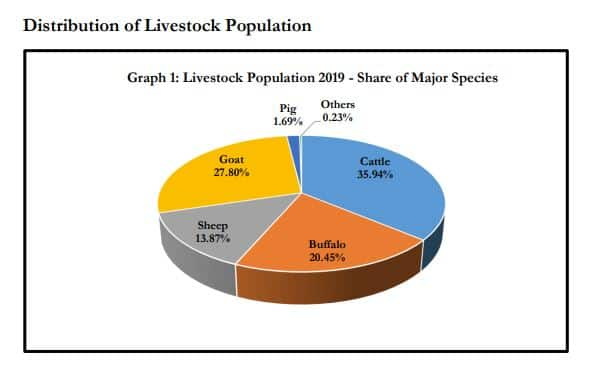Livestock population increases by 4.6%, cow count rises by 18%
The female cattle (cows) population is 145.12 million, increasing by 18 per cent over the previous census (2012), the data revealed. The total buffaloes in the country is 109.85 million, showing an increase of about 1 per cent.
Trending Photos
)
New Delhi: The livestock population in India increased by 4.6 per cent over the previous census conducted in 2012, to a total of 535.78 million, the 20th Livestock Census report released by the Department of Animal Husbandry and Dairying on Wednesday revealed.
There has also been a sharp jump by 18 per cent in the number of cows in the country. The rise in 2019 is sharply higher than the increase in livestock population and increase in bovine population (cattle, buffalo, mithuns and yaks), which is just by one per cent.
The female cattle (cows) population is 145.12 million, increasing by 18 per cent over the previous census (2012), the data revealed.
The total buffaloes in the country is 109.85 million, showing an increase of about 1 per cent.
The total milch animals (in-milk and dry) in cows and buffaloes is 125.34 million, an increase of 6 per cent over the previous census.
The total bovine population is at 302.79 million in 2019.
In addition, the total number of cattle in the country in 2019 is 192.49 million showing an increase of 0.8 per cent over the previous census.

(Image Courtesy: Department of Animal Husbandry & Dairying)
The livestock census was conducted in participation with all states and Union Territories. It is conducted periodically since 1919-20. The enumeration was done both in rural and urban areas. The livestock census covers all domesticated animals and its headcounts.
Various species of animals including cattle, buffaloes, mithuns, yaks, sheep, goats, pigs, horses, ponies, mules, donkeys, camels, dogs, rabbits and elephant, and poultry birds including fowls, ducks, emus, turkeys, quails, and other poultry birds possessed by the households, household enterprises/non-household enterprises and institutions have been counted at their site, the statement said.
Meanwhile, there is a decline of 6 per cent in the total indigenous/non-descript cattle population over the previous census. However, the pace of decline of this cattle population during 2012-2019 is much lesser than as compared to the 2007-12 period, where it was about 9 per cent.
The total poultry in the country, at 851.81 million in 2019, registered an increase of 16.8 per cent.
The total commercial poultry in the country is 534.74 million in 2019, increasing by 4.5 per cent over the previous census.
The major thrust given to the latest census is the collection of data through tablets computers. This census is a unique attempt as for the first time such a major initiative has been take to digitise household level data through online transmission from the field.
In the whole operations, the state/UT governments engaged more than 80,000 field personnel who are mostly veterinarians and para-veterinarians for the smooth conduct of the exercise.
Stay informed on all the latest news, real-time breaking news updates, and follow all the important headlines in india news and world News on Zee News.
Live Tv







)
)
)
)
)
)
)
)
)
)
